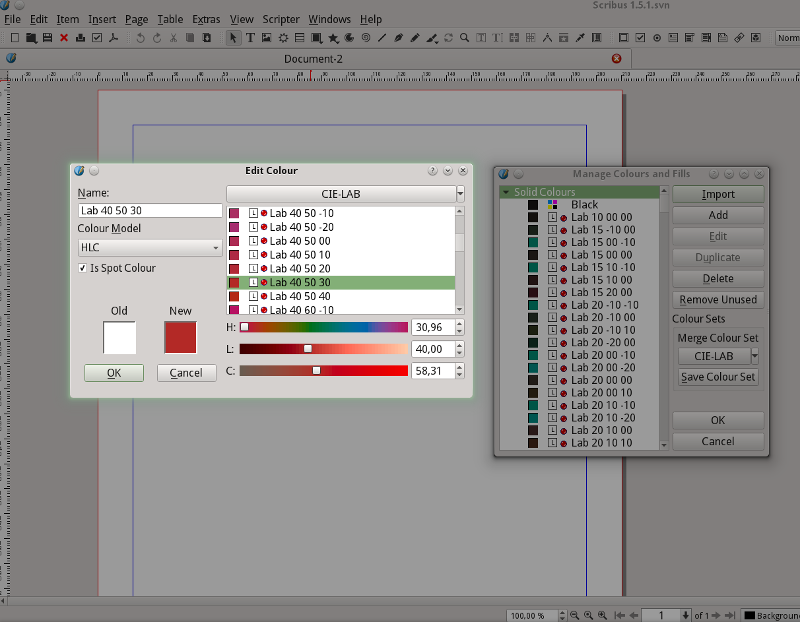Scribus
About Scribus
Scribus Pricing
Scribus is available to users for free
Free trial:
Not Available
Free version:
Available

Most Helpful Reviews for Scribus
1 - 5 of 17 Reviews
Md Fateh Ali
Verified reviewer
Design, 11-50 employees
Used weekly for less than 12 months
OVERALL RATING:
5
EASE OF USE
4
VALUE FOR MONEY
5
CUSTOMER SUPPORT
5
FUNCTIONALITY
4
Reviewed June 2022
The best open source alternative of Adobe InDesign
It's a great tool to create books and magazine designs. It allows me to import a large number of pages and work on them easily. As open-source software, it works wonderfully, but if you need advanced and professional work, you consider others. I will recommend others to try it before you buy adobe InDesign or Affinity Publisher. I hope you will love this.
PROSScribus is one of the best desktop publishing software in the publishing and print media and it's totally free to everyone. The user interface of this software is pretty cool and very lightweight. It supports multi-cross platforms like windows, Linux, and macOS. So, you can install this software on multiple computers. It has many professional features, such as CYMK support, image packaging, and a wonderful PDF export feature, highly valued by professional printing services.
CONSOne of the big issues of Scribus is its open-source software. So it didn't get updated regularly. In contrast to Adobe InDesign, Scribus lacks advanced features and functionality.
Reason for choosing Scribus
Pricing is the main issue. It works really well for beginner and basic projects.
James
Libraries, 2-10 employees
Used monthly for more than 2 years
OVERALL RATING:
4
EASE OF USE
3
VALUE FOR MONEY
5
FUNCTIONALITY
4
Reviewed October 2023
Scribus - Great open-source tool for preparing small to medium sized publications.
I actually use Inkscape for graphics layout work for posters and flyers. When the project requires multi page layouts and more complex text handling Scribus has fit our needs well. I spent 12 years as a part-time technology teacher in a small private school. We used scribus each year to design and then publish the school's yearbook, so it can handle quite complex tasks. In my current position I handle most of the graphics design and publishing tasks for our small public library. I work from both home and onsite so the flexible licensing is very important to me. Our budget can't match those of larger libraries so the cost savings of using open-source helps us direct finances to more important needs at the library.
PROSThe open source licensing allows us to use this on each of our staff computers for free, plus it can be installed on laptops or home computers for the staff to use outside of the office. It is powerful and flexible enough to do the simple brochures and booklets that we need here at the library. It also gives me a higher confidence that years down the road the files will still be useable and the software still available. I can't say the same for some older archive files we have that were created in proprietary software that either no longer exists or is prohibitively expensive.
CONSThe features we need are present, but the user interface can still be a little bit rough compared to low to mid-range commercial Desktop Publishing software. Some of the staff are still most comfortable using Microsoft Publisher for their tasks.
Reason for choosing Scribus
For the same reason that we switched from primarily using Microsoft Publisher. Scribus offers an open xml format that should be readable in the long-term future. The open-source licensing cuts down on our technology budget allowing us to allocate the money to more important needs for the library.
Reasons for switching to Scribus
More flexible licensing so we can install on all our computers at no cost. Scribus uses a non-proprietary xml file format so text content can be recovered even if Scribus becomes unavailable or unusable in the future.
Debbie
Marketing and Advertising, 1 employee
Used weekly for less than 6 months
OVERALL RATING:
1
EASE OF USE
3
VALUE FOR MONEY
1
FUNCTIONALITY
1
Reviewed February 2024
Too many bugs. Unusable.
This product used to be decent. Now it's unusable and I paid for this. Terrible.
PROSNone. I used to use Scribus, now it's unusable with text flow bugs.
CONSType won't flow properly in a text frame. Words are separated with no logic or properly placed hyphen when a sentence comes to the end of a text frame. I've spent way too much time researching and trying to "fix" this. The work around is to force a return where you want the sentence to break. It's basically unusable. This is NOT the free trial, I have paid for this. I'm finding other people are having this issue. I have since read that it won't work on a Mac M1. That information should have been listed prior to me paying for this. I'll have to go back to paying $$$$ for InDesign. At least I know that'll work!
Jeremy
Professional Training & Coaching, 1 employee
Used monthly for more than 2 years
OVERALL RATING:
4
EASE OF USE
3
FUNCTIONALITY
4
Reviewed October 2022
Great Tool for Open-Source Design
Scribus allows me to select and convert colors in bulk, which saves a ton of time in my workflow. It is moderately easy to use, and I have found myself using this program to make other quick changes to content as well.
CONSThis software has crashed on me a few times, and I have experienced other glitches as well. These issues are not frequent, but I have experienced them occasionally.
Nick
Publishing, 1 employee
Used weekly for more than 2 years
OVERALL RATING:
5
EASE OF USE
4
VALUE FOR MONEY
5
FUNCTIONALITY
5
Reviewed October 2023
Have been happy using the 1.5 branch for years
Scribus, and especially using the Python API, is enabling me to create publishing-quality puzzle images and puzzle books (though I still have some work to do on that) very efficiently and consistently.There are definitely hurdles to overcome using the API, but in the end it is that API that is enabling me to scale my puzzle creation business in a way that would not be viable using any interactive desktop publishing GUI simply because of the time it takes doing stuff with mouse clicks and manual fiddling.
PROSCurrently using Scribus 1.5.8 (in Ubuntu), it supports everything I need to create high quality Begriddled puzzle books, as PDFs suitable for KDP and Ingramspark, etc, and publishing quality PNG and JPEG puzzle images (that include text) that can be included as-is in magazines,etc, or used on products.Although currently 1.5 is considered the development branch, and 1.4 the stable one, the reality is that 1.5 is better than 1.4, is very stable, and suitable for production use (as I have been using it) for years.More recently I have started to use the python API to create documents (including books) programmatically rather than do it manually via the Scribus GUI. Although I found this not so easy at first, once I found decent 1.5 documentation (I use impagina.org/scribus-scripter-api) and got up to speed with it, it opened up a whole new dimension of automation possibilities. It is not perfect, but scripting in Python 3, I have so far always been able to work around limitations.
CONSThe Python API is not well documented and there are not many good script examples. Most examples you can find are outdated and simply don't work now because they use Python 2 instead of 3, or were created for Scribus 1.4.Some things that are straightforward in the GUI require some trickery to automate. Eg I found rotating an object around its centre, easy to do in the GUI, quite a challenge. But having got that working with the help of ChatGPT to develop an algorithm to do it using only the features provided by the API, I won't have to write that function again.Some issues have to be worked around. The only way I found to make some changes "stick" and be properly visible in the GUI was to save and re-open the document. This is straightforward in the API, but it took me some time to discover this worked as a workaround.But the good thing is that once you've solved an issue and incorporated that in your scripting, you can re-use that without having to solve the problem again.Another example was wanting individual pages in a document to have different dimensions. It's an unusual thing to want to do, but it was useful for me to be able to generate differently sized images for a puzzle and its solution. You can do it in the GUI. The way I found to do it programmatically was to create a new document with the new size, and import that back in to the main document. It works well, but you shouldn't have to work around limitations in this way.
